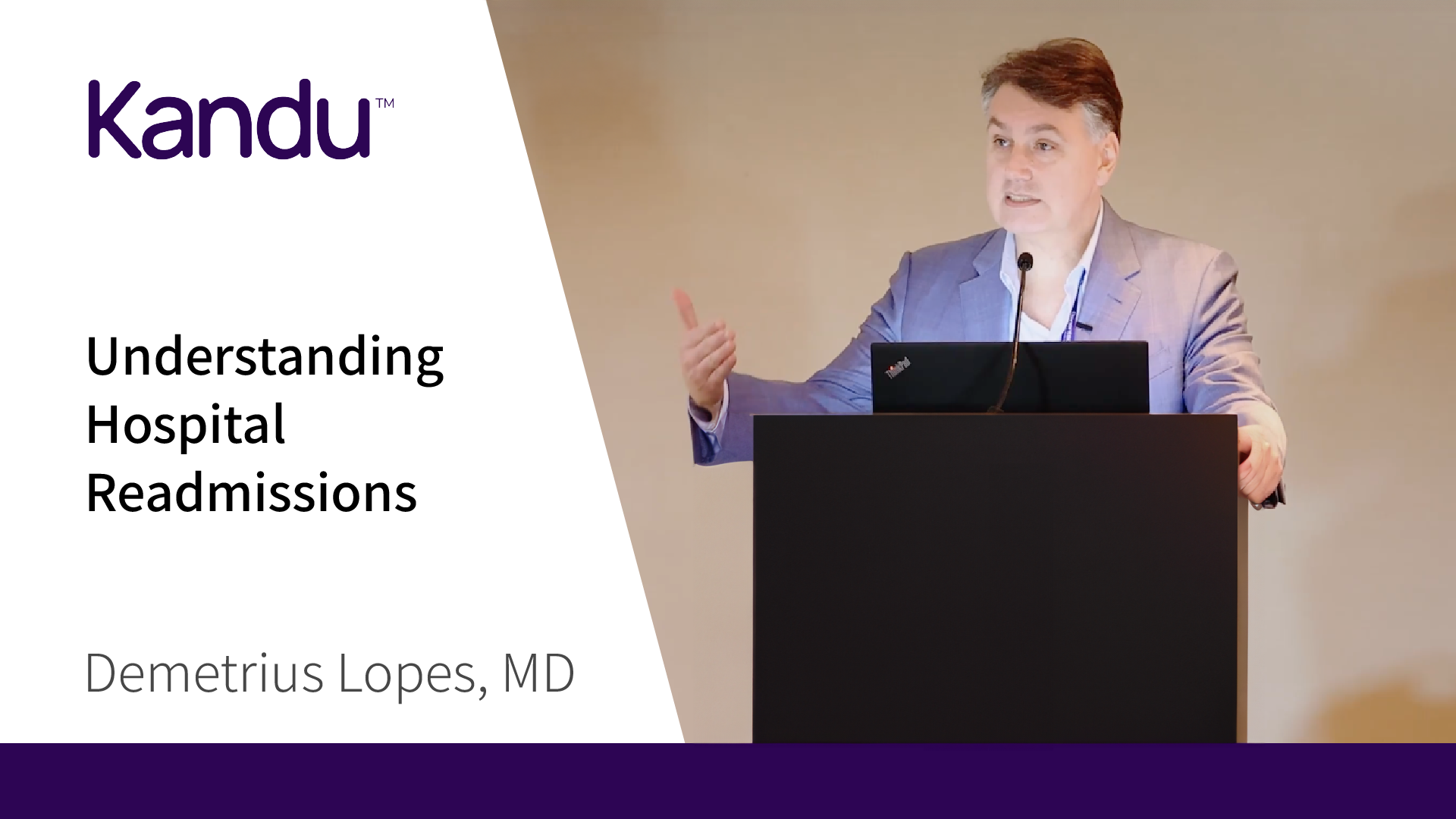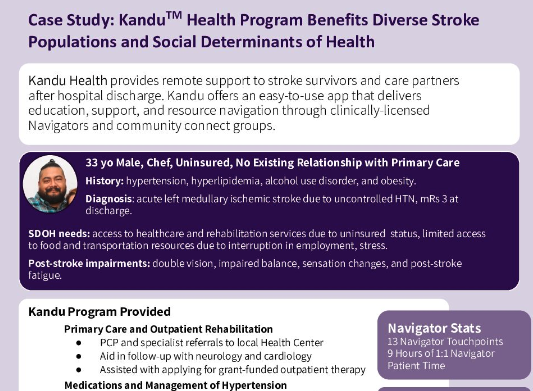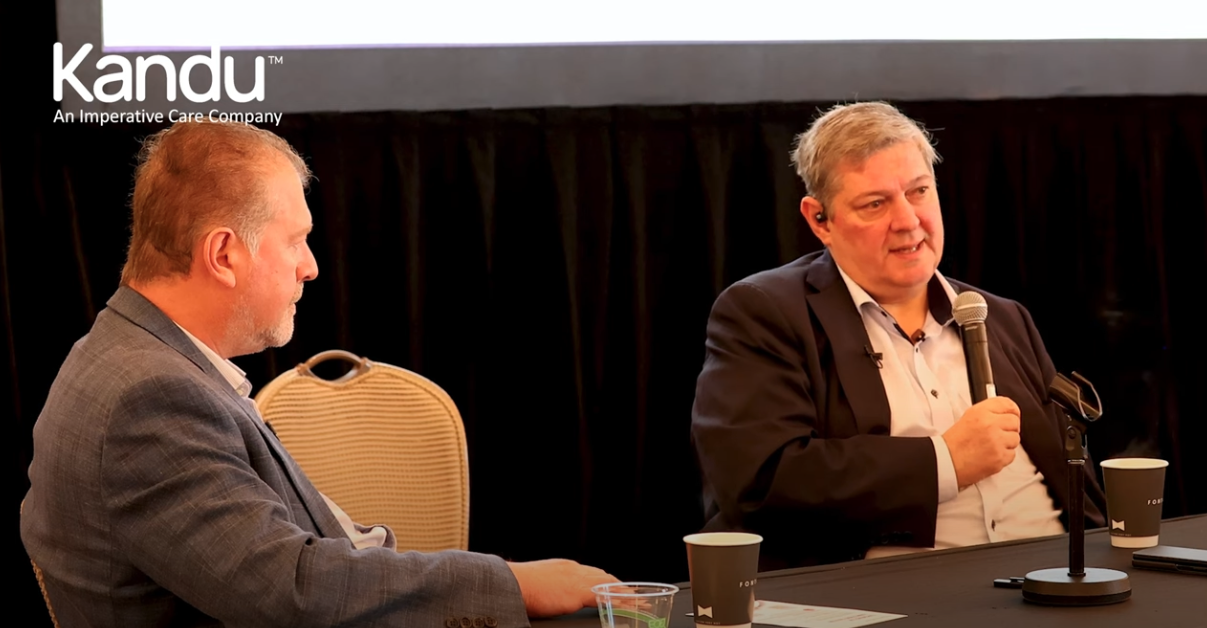
Kandu Announces Preliminary Outcomes of the First 100 Patients Enrolled in its Stroke Recovery Program
100 patient data demonstrated over a 50% reduction of inpatient readmissions compared to published ranges
In an ISC 2024 poster presentation on the first 100 patients enrolled in Kandu’s stroke recovery program, Dr. Nancey Tsai and team demonstrated impressive improvements in 90 day modified Rankin Scores (mRS), along with inpatient readmission rates >50% lower than those observed in published literature. Ninety five percent (95%) of program participants achieved clinician-assessed mRS scores of 0-2 at 90 days.
Kandu offers a novel, holistic model for stroke survivors during the first months of their return to home and community settings. They partner with hospitals in the delivery of the program to encourage continuity of patient care and change the course of stroke recovery. The service includes a combination of one-on-one support from a licensed Kandu Navigator, multidisciplinary specialty consults, and education, resources, and community delivered through Kandu’s novel app and communication platforms.
“As stroke survivors transition home, the first 90 days of recovery are critical,” reports Dr. Nancey Tsai, Medical Director of Kandu Medical Services. “In the absence of continued monitoring and support, many important factors can be overlooked, including adherence to medications, preparing for and attending follow up appointments, and managing depression and anxiety. Survivors often discover new impairments and challenges after they return home and may require unanticipated support to adapt their activities of daily living. The impacts of stroke can present physical, mental, and social concerns, persisting months or years into their recovery. Any of these concerns limit quality of life and can be costly to the healthcare system.”
Sign Up for Business Updates
The 100 enrollees ranged in age between 27 and 86 years. Enrollment referrals came from inpatient hospitals for 74% of patients, outpatient settings for 13%, and community settings for 13%. Primary sources of insurance were Medicare for 28%, Medicaid for 25%, and Commercial Plans for 44%, while 3% of enrollees were Uninsured. 93 enrollees completed and graduated from the program. 1 enrollee died prior to program completion. 6 stroke survivors enrolled and discontinued.
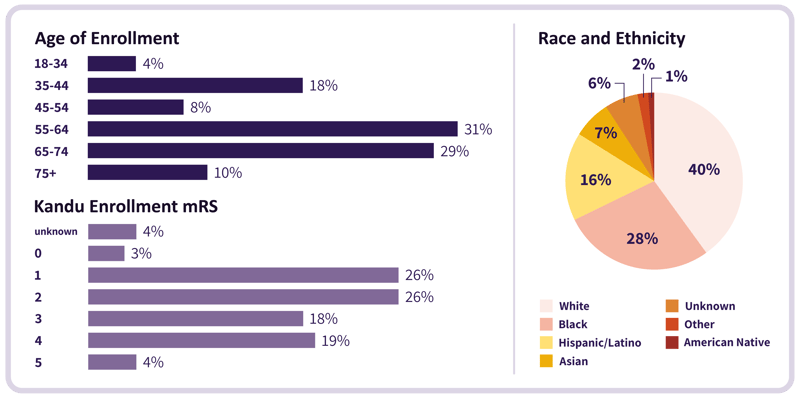
Working as a team with clinical navigators
All participants were matched with a clinical navigator – either an occupational therapist (OT) or licensed clinical social worker (LCSW) – who served as a guide throughout the program. The navigator-survivor team worked together to reduce barriers to recovery, increase survivor health literacy and agency, and improve quality of life post-stroke.
Kandu Navigators were available to participants throughout the program via phone calls, asynchronous messaging, and video calls with the survivor and care partner. Both survivors and their care partners completed clinical assessments to track their needs during recovery and assess care gaps and resources related to social determinants of health (SDOH).
The average enrollee participated in 9.9 navigator touchpoints, totaling 5.6 cumulative hours over the program length. In addition, enrollees averaged 4.1 hours of self-directed time in the app; reading educational articles, utilizing recovery tools, and participating in support communities.
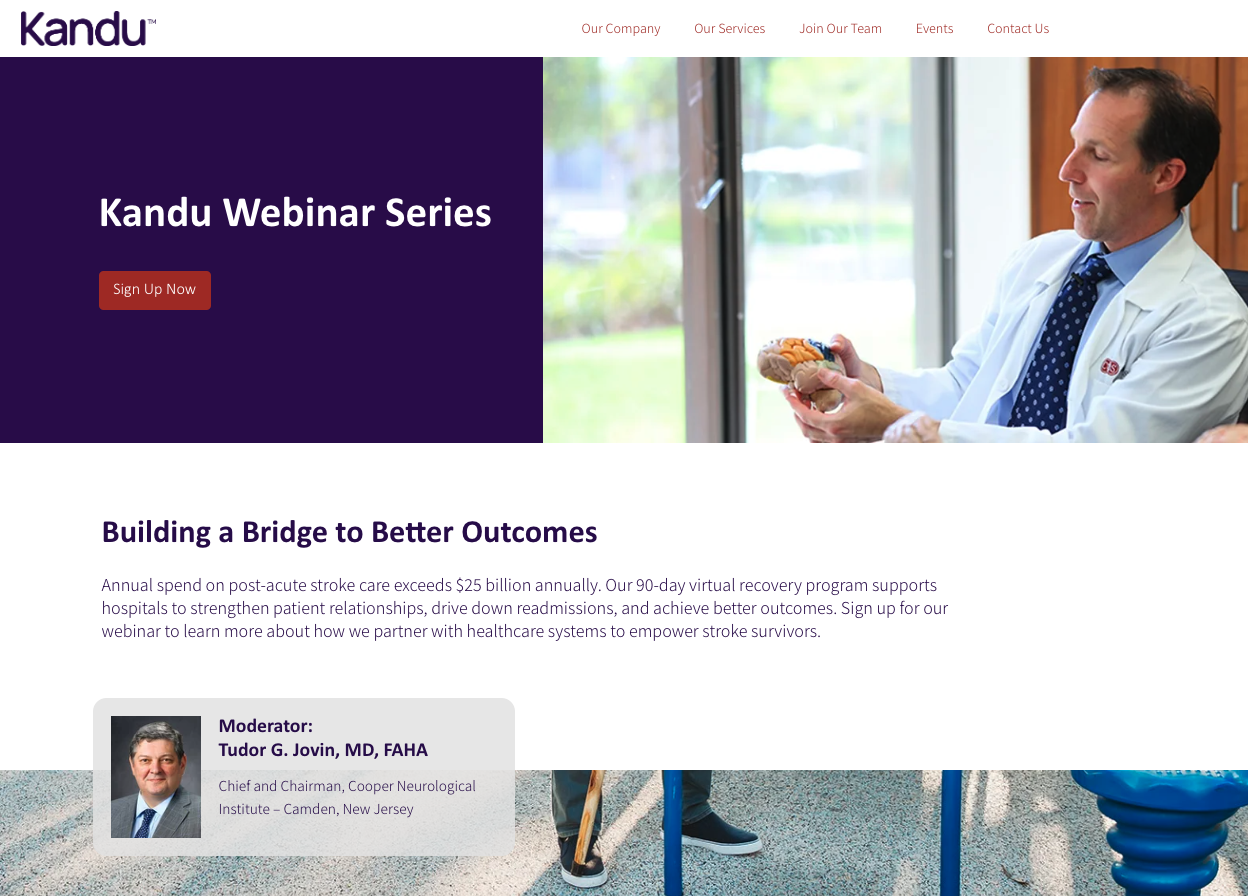
Kandu Webinar Series
Annual spend on post-acute stroke care exceeds $25 billion annually. Join us to learn how our 90-day virtual recovery program supports hospitals to:
- Strengthen patient relationships
- Drive down readmissions
- Achieve better outcomes.
Taking an active role in stroke recovery
After participation with Kandu, 98% of survivors self-reported medication compliance. In addition, 90% of survivors had scheduled follow-up with Neurology, and 95% of those survivors who did not have an existing primary care relationship at enrollment had established a medical home with a primary care provider (PCP). Navigators supported 15% of survivors to obtain new primary or secondary insurance during the program.
Stroke survivors reported their steps toward subsequent stroke prevention, which included:

Survivors completed a self-reported health behavior change questionnaire related to management of stroke risk factors for subsequent stroke prevention. Survey responses demonstrated that following participation in the Kandu program, 78% of survivors reported increasing their physical activity level, 84% of survivors reported modifying their diet, 95% of survivors reported improved stress management, and 91% of survivors reported regularly taking their blood pressure.

Among patients referred to Kandu from inpatient settings, clinician-assessed 90-day mRS was captured for 92% of participants. Results showed that 55% of participants with an enrollment score >0 demonstrated improvements at 90 days. 95% of inpatient-referred enrollees achieved independent living (mRS 0-2) by program completion. All-cause, all-facility inpatient readmission rates in this population were similarly impressive: 4.5% at 30 days and 9.5% at 90 days.
Kandu’s readmission and mRS outcomes compare very favorably to published norms in stroke recovery. Further research and direct comparative studies will establish more clearly the magnitude and drivers of differences in outcomes.
While the initial data are promising, Kandu remains vigilant in evaluating and improving the program for stroke survivors and care partners. Additional planned evaluations of the Kandu Health program include a propensity-matched analysis of readmissions among Medicare-eligible Kandu graduates versus historical claims data from a Medicare Fee-for-Service (FFS) population, which will be completed after sufficient participants have enrolled in the program.
The data in this article was first presented as a poster at the 2024 International Stroke Conference. Click below to access the poster.

Kandu Webinar Series
Annual spend on post-acute stroke care exceeds $25 billion annually. Our 90-day virtual recovery program supports hospitals to strengthen patient relationships, drive down readmissions, and achieve better outcomes.

